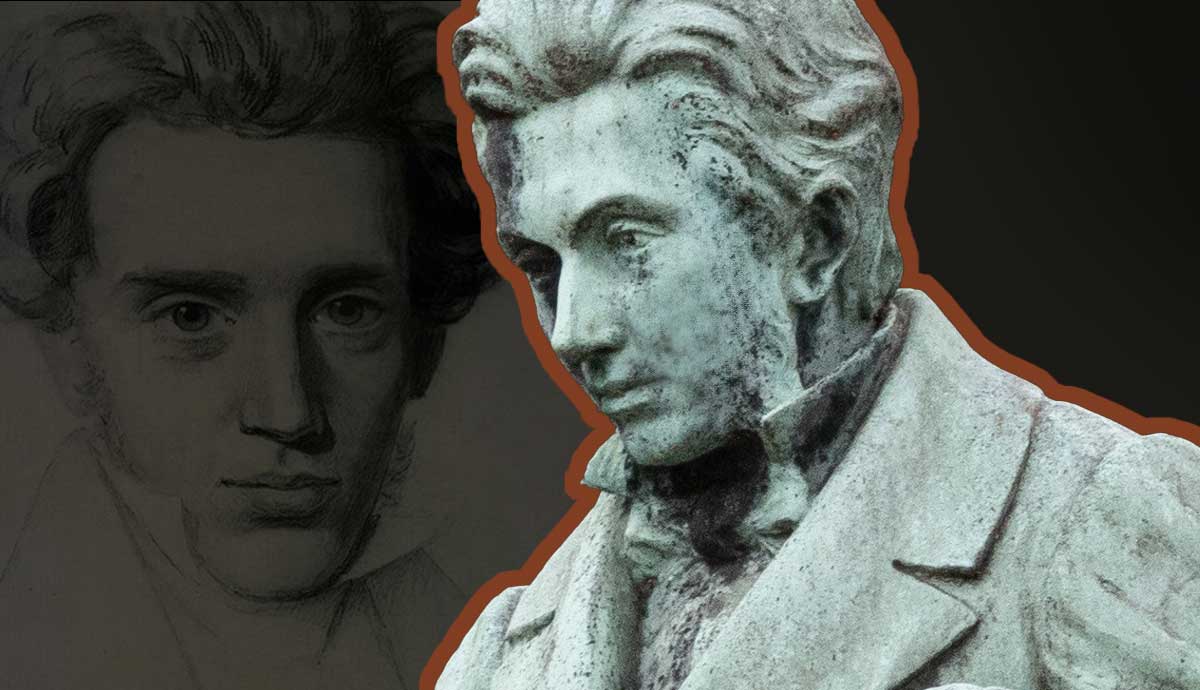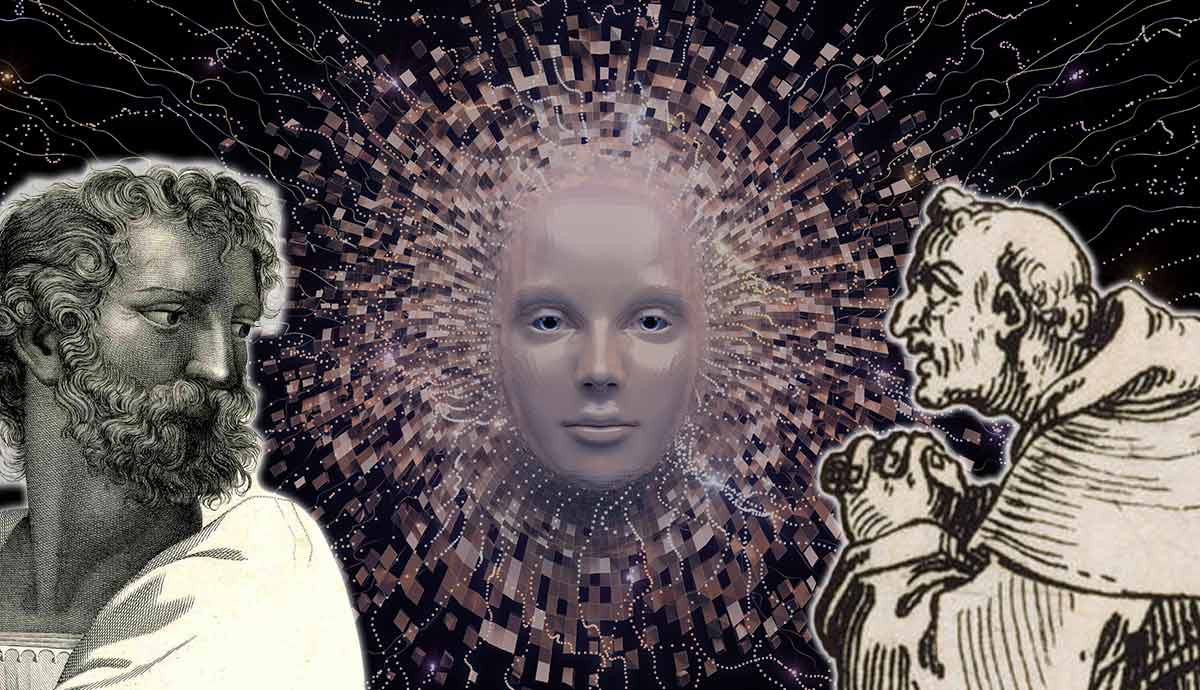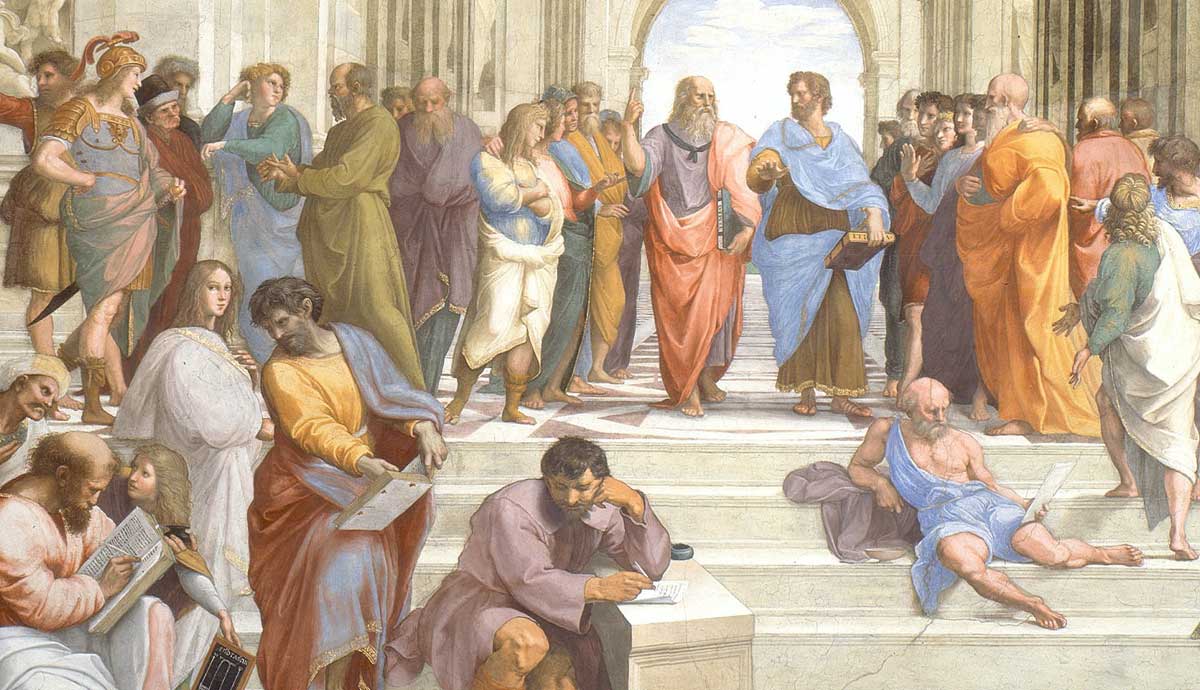
Camus wrote the short stories included in the collection “Exile and the Kingdom” at a time of extreme turmoil in his life. Recently shunned by the Parisian literary community, Camus suffered a crisis of confidence in both himself as a writer and as a man. What came of this period was a powerful collection of stories. Here we look at one story in particular, “Jonas,” a deeply personal reflection on the author’s own life, his work, and his failings. It is at the same time a confession and an indictment.
Exile and the Kingdom

In 1957, three years before his tragic death, Albert Camus (1913-1960) published a collection of short stories titled “Exile and the Kingdom” (L’Exil et le Royaume). The stories included in the work are “The Adulterous Woman” (La Femme adultère); “The Renegade or a Confused Spirit” (Le Renégat ou un esprit confus); “The Silent Men” (Les Muets); “The Guest” (L’Hôte); “Jonas or the Artist at Work” (Jonas ou l’artiste au travail); and “The Growing Stone” (La Pierre qui pousse). At the time, the collection was not all that well received; however, today Camus’s short stories are generally accepted as among the best in the French literary canon. Indeed, his story, “The Guest,” is widely considered a masterpiece.
All the stories included in the collection have deeply personal connections to Camus’s life. Some are biographical; for example, the workers on strike in “The Silent Men” are based on his uncle. However, most reflect Camus’s inner turmoil: his attempts to reconcile the various philosophical and personal problems he faced at the time.
A recurrent theme in all the stories is isolation and the inability to communicate. Janine, the ‘adulterous wife,’ cannot communicate with her husband Marcel; the striking workers cannot communicate with their boss after a tragedy; French teacher Daru cannot communicate with an Arab prisoner put under his charge; French engineer d’Arrast cannot communicate with the locals in Brazil; Jonas, the artist, cannot communicate with his admirers; and the Renegade has his tongue cut out!
To understand why Camus was so interested in isolation and the problems of communication and being understood, we need to look at what was happening in his life at the time of writing.
The Origin of Jonas’s Story

From the beginning of his writing career, Camus had an ambitious plan for his work. This plan, involving several stages or cycles, he estimated, would take around twenty years to complete. He never did complete the project. This was for two reasons: tragically, he was killed in 1960 in a road accident, but he also suffered a major falling out with his colleagues on the French literary scene.
After the publication of his 1951 essay The Rebel, many on the left-wing of French literature and philosophy felt Camus had stabbed them in the back by publishing what they saw as a reactionary or even conservative essay. In fact, Camus had simply been wary of throwing unconditional support behind the Soviet Union at a time when the Communist state was carrying out various attacks on freedom.
Stalin was still the leader of the USSR, and news of his purges and the labour camps was hardly unknown in France. Nevertheless, many on the French left believed that any public criticism of Communism, Marxism, or the Soviet Union was handing talking points to their ideological enemies on the right. Accordingly, after publishing “The Rebel,” Camus was shunned and mocked by many of his former friends. Already sensitive to criticism, Camus took this very badly.
Camus felt, with some justification, that he had not been understood. In addition, he struggled with the idea of communication itself—how to make oneself understood. He knew that “The Rebel” was going to be controversial, but underestimated the levels of vitriol that would come his way. Camus was virtually ostracised from the French literary community.
Taking a break from his planned work, Camus started on something new. This became “Exile and the Kingdom” and the novel “The Fall,” which started life as a story for the collection.
Jonas, or the Artist at Work

Gilbert Jonas is a thirty-five-year-old artist who always knew that one day his talent would be recognised and appreciated. This confidence came from a belief in his personal ‘star.’ We could call it a belief that he was born lucky or that something mysterious was watching over him.
After the critics start taking an interest in his work, Jonas is pleased to be offered a monthly stipend that allows him to focus solely on his art. A friend, the architect Rateau, advises Jonas that the money he receives from the gallery owner each month is hardly enough, but Jonas doesn’t care.
We learn that despite—or maybe because of—his parents divorcing when he was growing up, Jonas had a happy childhood and wanted for nothing. He went through school without any problems and, after completing his studies, went to work at his father’s publishing house. It was while working for his father that Jonas took up painting.
Once he started the hobby, he couldn’t stop and became consumed by it. Had it not been for temporarily damaging his hand in a motorcycle accident that happened whilst he was out riding with Rateau, Jonas would never have taken a break from painting. It is during this break that he meets Louise Poulin.
Unlike Jonas, who thinks only of painting and his star, Poulin visits art galleries and researches various artists and movements. She is extremely organised and handles all of Jonas’s affairs. This eventually includes handling their marriage arrangements, finding them a three-bedroom apartment, and producing three children. Once the first child was born, all the attention she lavished upon Jonas was now directed towards her children. He, however, does not seem to mind.
Jonas’s Artistic Success

Jonas’s success as an artist comes after his marriage to Louise and the birth of his children. The three-bedroom apartment they live in is unusual in design. The space is very cramped horizontally, but the enormously high ceilings provide a great deal of vertical space. Due to the high ceilings and large windows, the rooms receive a lot of light, which is ideal for an artist. What is less ideal is the lack of space. The children occupy one small room, and Jonas and his wife have the other. His studio is in the largest room, and the couple can share meals in the kitchen if one of them stands. Much of the space in Jonas’s studio is taken up by his canvases and art equipment. Indeed, he even uses some of the canvases to partition off a small area for the baby to sleep in during the day.
Louise tries not to disturb Jonas when she comes into the studio to tend to the baby, but her attempts at discretion actually create more of a disturbance. Jonas also becomes distracted by the many friends, admirers, and well-wishers who start visiting his home now that he is becoming known as an artist. These friends telephone and invite him to lunch or come over to the apartment to have lunch there. Those who are sensitive enough to his needs and realise that artists work by daylight come over in the evening to talk into the night about art and artists.
Jonas enjoys these discussions and, to make up for lost time, decides to rise early in the mornings to start work before breakfast. Unfortunately, he is often tired because of the late nights spent with friends.
Gaining Disciples

As Jonas’s reputation as an artist grows, he starts to attract students who want to work under him. New artists come to his apartment to discuss his work and thoughts on art, as well as to receive feedback on their own work.
Before having these artist-disciples, Jonas thought very little about art theory or the deeper meanings behind his work. He admits to himself that he does not really know much about this side of art. His talent and skill derive, he believes, not from himself but from his ‘star.’ However, he indulges his students and disciples, acting in the way he believes they expect and want.
Soon, he learns that what they actually want is not genuine feedback and authentic artistic insights but rather simple praise and encouragement. Jonas is happy to provide, but he discovers that thinking of new ways to individually tailor such encouragement is a lot of work.
Because of the frequency and number of visits that he receives, Jonas finds less and less time to work on his paintings. Ever the organizer, Louise suggests rearranging the apartment so that Jonas can move his studio into the smaller room. They measure up and discover that once the space taken up by canvases and equipment, as well as all the daily visitors, is accounted for, there is about the same amount of working space in the small bedroom. Jonas is delighted with the idea.
There is also a touch of sadness as the couple plans and works together, both realizing how much they have drifted apart due to the little time they have to spend together.
Jonas’s Mental Crisis

The pressure on Jonas and his family, brought on by his increasing fame and reputation as an artist, starts to increase and takes its toll. Louise’s sister moves into the apartment to help, and Jonas spends even less time with his family. His work suffers due to the attention and demands of his daily visitors, and he becomes aware that criticism of his work is starting to appear in the press.
People are saying that his early work is his best, and his more recent paintings are not as good. There is now, in these articles, a more open hostility to Jonas as an artist. Put simply, his reputation as an exciting artist is beginning to fade. This is largely due to the distractions in his life and his inability to focus on work.
Jonas has a mental crisis of sorts. He starts spending more time away from home. Drinking alcohol in bars replaces the kind of mental excitement he once derived from painting. He also seeks comfort in other women, occasionally spending nights away from home with them. All this while, he thinks little of his family. One day, after staying out all night, he returns home, and his wife asks if he has been with a woman. Seeing the despair in her face, Jonas feels his heart breaking and begs Louise’s forgiveness.
Jonas goes out and comes back with some wooden boards. At first, people think that he is switching from canvas to board for his paintings, but actually, the wood is for another project. Jonas builds himself a kind of loft, high up on the hallway walls. Accessible only by a step ladder, he retreats up into his loft to work alone, away from everyone.
The Mysterious Painting

Jonas ends up spending all of his time in his loft. People are worried because he is not taking care of himself and claims to be working, although he does not have a canvas and is sitting in the dark.
One day, Jonas asks Rateau to give him a canvas so he can start working on a painting in his loft. When it is finished, Jonas falls from the loft and is taken to bed. Rateau looks at the “painting.” It is an almost entirely blank canvas save for a word painted in the center. Rateau cannot tell if it says “independent” or “interdependent.” Here, the story ends.
The parallels between Camus’s own life as a writer and Jonas’s life as a painter are clear. Like Jonas, Camus thought little of money and believed he had some kind of “star” responsible for his art. Camus was surrounded by hangers-on who demanded much of his time. He too suffered from an audience that only wanted him to reproduce his early work and complained about his later work. There is also a strong element of confession in the story. Camus conducted several affairs and treated his wife, Francine, badly. Indeed, she was once hospitalised with depression and attempted to take her own life.
The mysterious final line of the story, sometimes translated as “solitary” or “solidary,” highlights the tension, ever-present in Camus’s work, between the needs of the individual and the obligations one has to others. The story ends with an unanswered question about art and creation: is it a product of a person reflecting on their life experience, or is it part of a shared human experience, a product of human solidarity? In “The Rebel,” Camus had written, “I rebel – therefore we exist.” This story expresses possible doubts over this formula.










